The Work of Ronald Pope - Photographs
The following selection of Pope’s work is drawn from a larger exhibition devoted to the artist, currently on display at the Museum and Art Gallery in Derby. The photographs, taken by David Edge, reveal the hidden beauty of Pope’s sculpture-making process.
To see more of Ronald Pope’s works, please visit: www.ronaldpopesculptor.co.uk
All images: Copyright Artist's Estate / Derby Museums
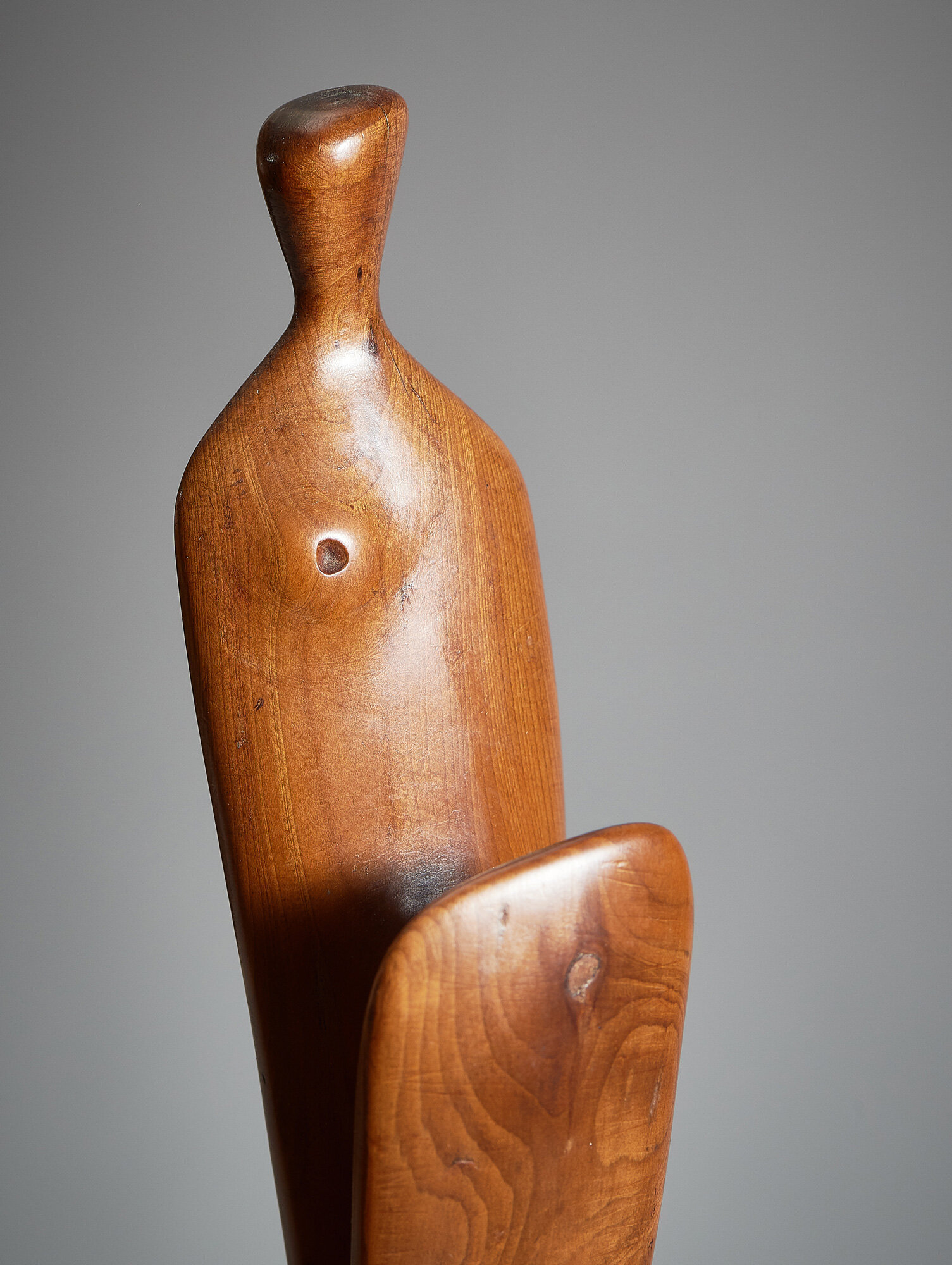
Composition (detail)
Carved wood, mounted on a wood base, about 1952
Between 1943 and 1958 Pope and his wife Joan lived at Knowle Hills, near Ticknall, in South Derbyshire. The house had no mains services and daily life was often hard. Nevertheless, Pope found comfort in its secluded location and natural surroundings, and began carving pieces of fallen wood gathered from nearby woodland. This small, carved wood sculpture is one such example and shows how Pope would allow himself to be guided by the material he was working with. The resulting sculpture has an organic feel. At the same time, its upright form and simple detailing, following the grain and individual characteristics of the wood, are suggestive of a human figure.
Transferred to Derby Museums from Derby and Derbyshire School Library Service in 2018

Curbar II
Welded bronze, mounted on wood base, 1969
Curbar II was inspired by the gritstone edge at Curbar in Derbyshire. Pope felt that rhythm, uplift, and excitement, lay in the intersection of horizontal and vertical lines formed by natural fissures in the rocks. These patterns were captured on camera during walks in the landscape and formed the basis of many, later exploratory drawings as well as sculptures such as this one.
Transferred to Derby Museums from Derby and Derbyshire School Library Service in 2018
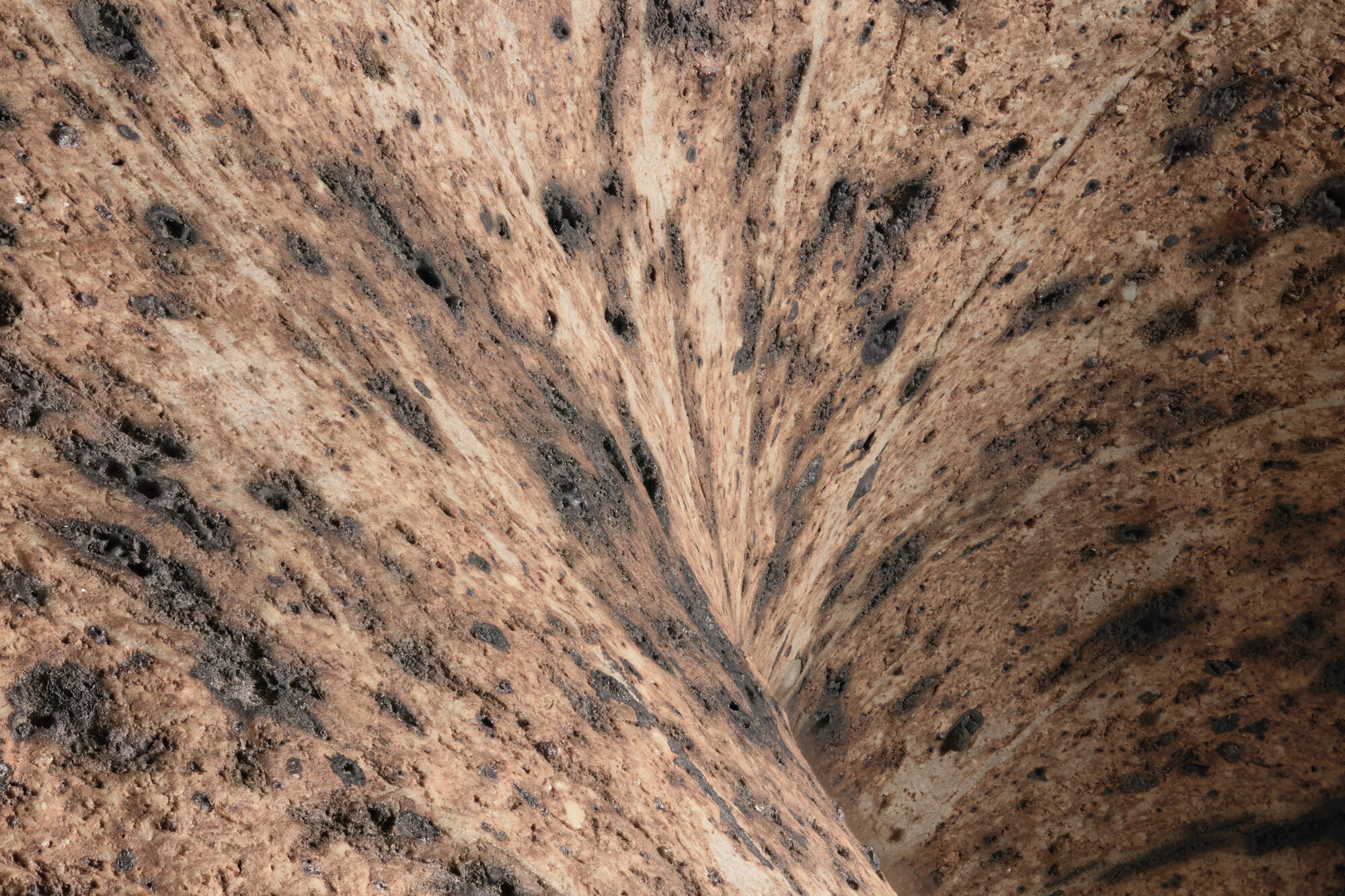
Circular Form (detail)
Ceramic, mounted on a marble base, date unknown.
Pope studied ceramics part-time at Woolwich Polytechnic alongside his training at Slade School of Fine Art between 1945 and 1948, and continued to make pottery and ceramic sculptures using a wood-fired kiln he built for himself at home. Working with clay was perhaps the most direct of all Pope’s methods of making, utilising just bare hands and simple cutting tools to shape his pots and sculptural forms.
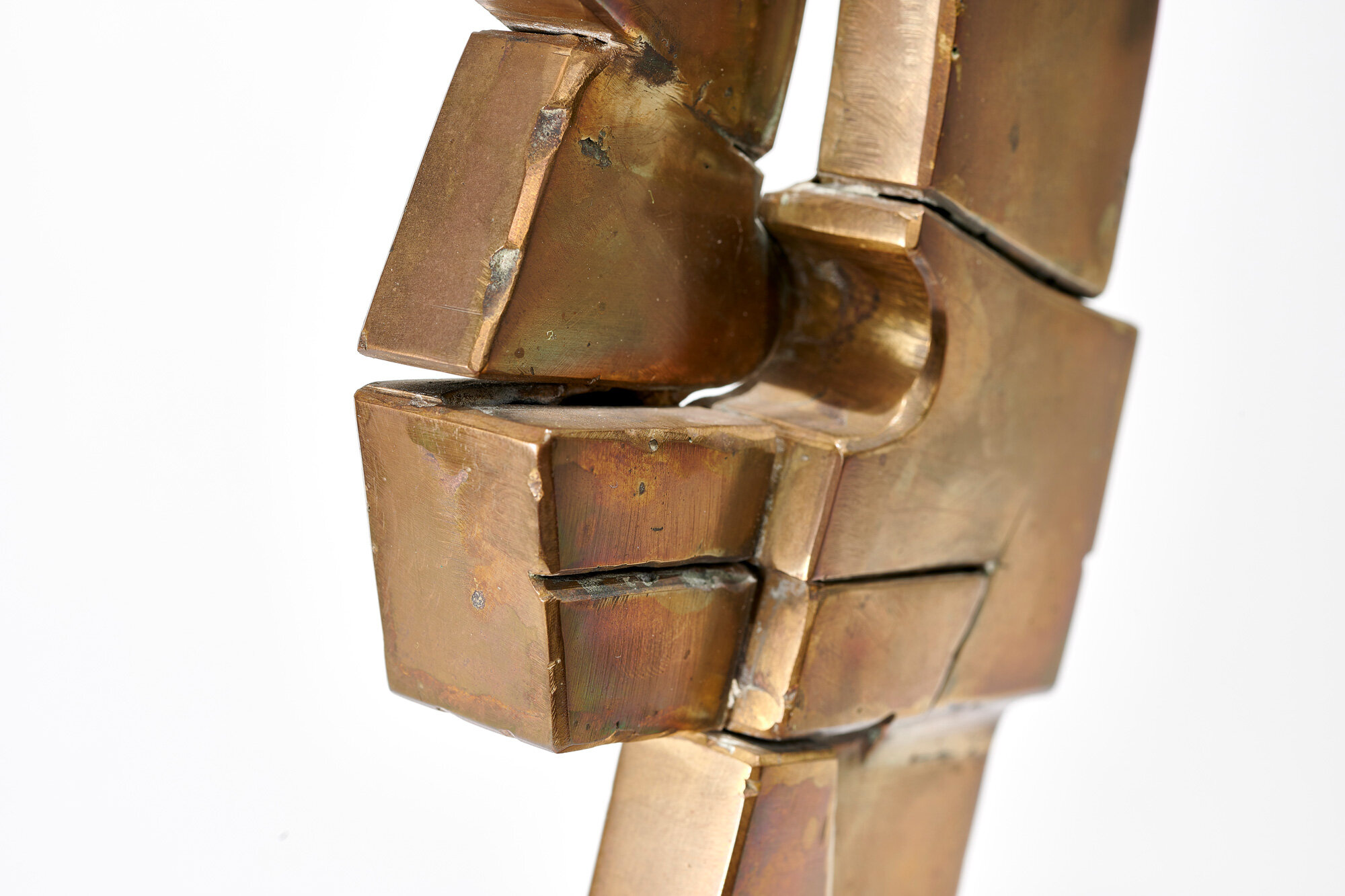
Duo (detail)
Brass, mounted on a marble base, early 1970s
Duo is the name of a series of works that focus on relationships between couples. Pope’s first sculpture of this title was produced for Lady Paget of King’s Newton Hall in Derbyshire. But it was not until 1972 that the idea of Duo appears to have become firmly fixed in his mind. Over the next five years, Pope made numerous drawings and small-scale sculptures under this title, experimenting with a range of interlocking shapes, materials and techniques to express a sense of the ‘unity’, as well as the tension, that he felt existed between men and women.
Bequest of Mr John Daniel Stancliffe Garratt
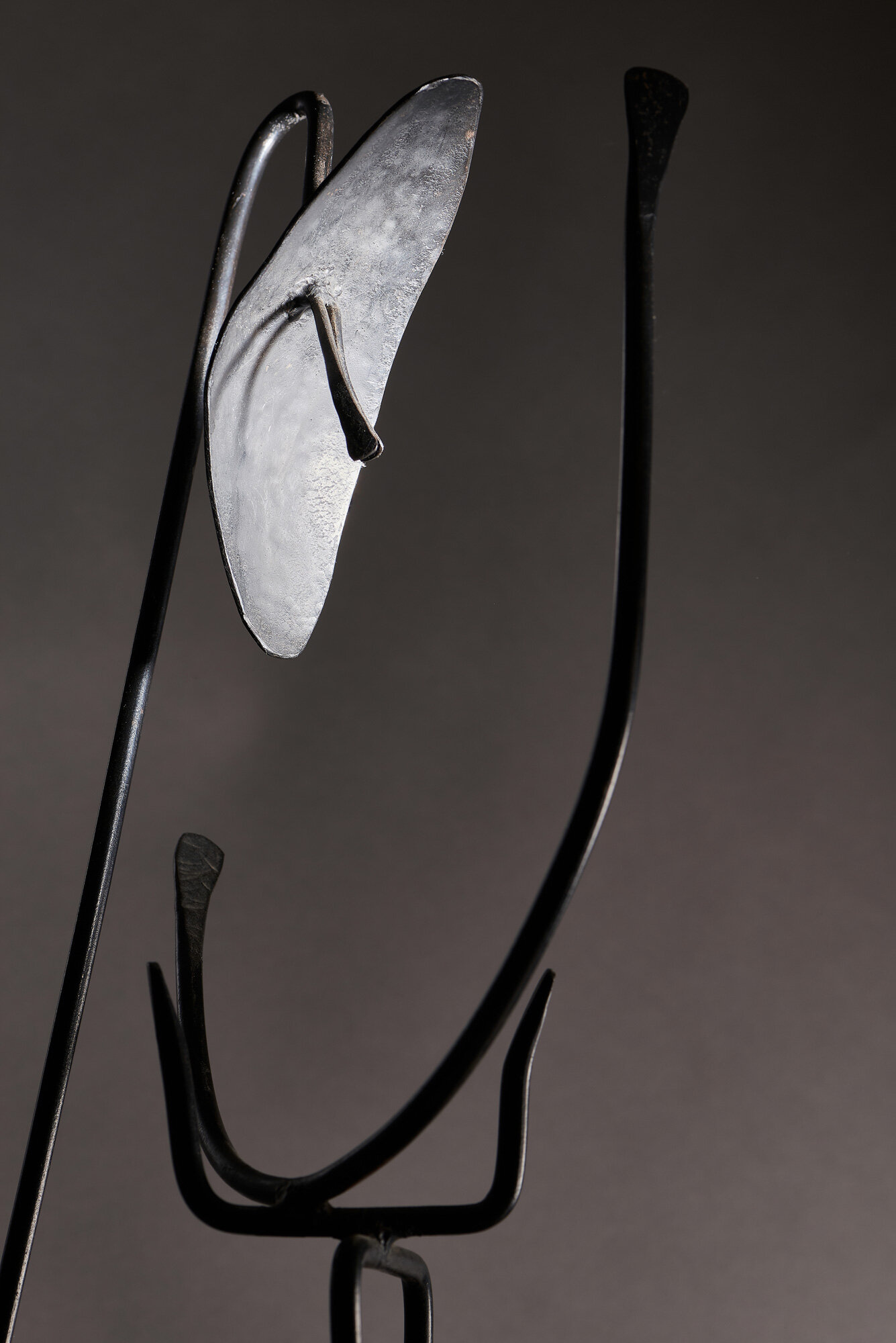
Sculpture (detail)
Welded steel, mounted on a marble base, 1954
In 1953 Pope constructed his first metal sculpture in response to a commission for a new school in Ilkeston, Derbyshire. Pope already had some of the skills needed to work with metal thanks to his training as an engineer at Rolls Royce and now drew upon these to explore a range of new possibilities for his art.
This early example, which resembles a plant-like form, demonstrates the delicacy and control with which Pope was able to work metal.
Transferred to Derby Museums from Derby and Derbyshire School Library Service in 2018
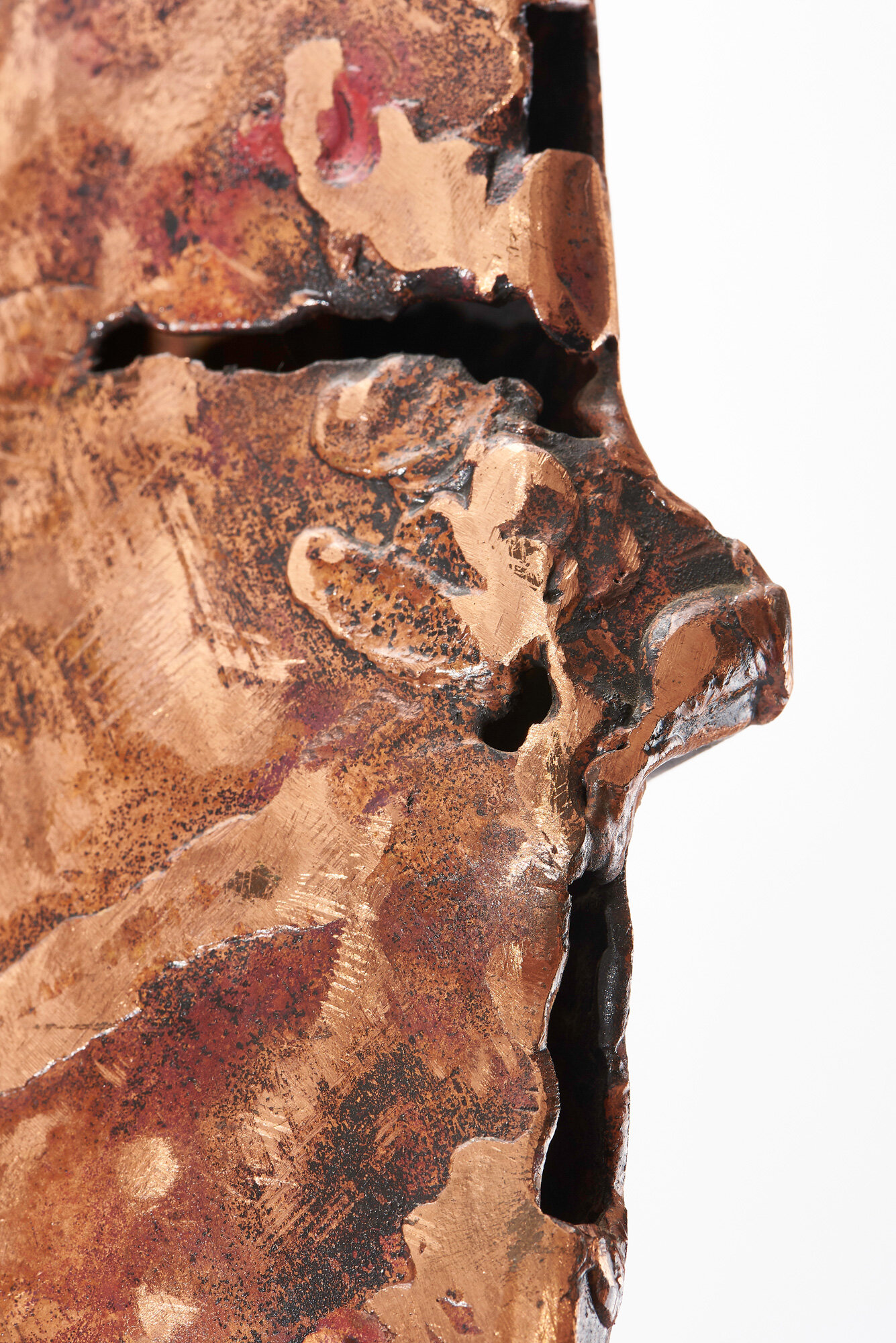
Mask (detail)
Welded copper, mounted on a marble base, 1961
This sculpture was commissioned by Pope’s friend and patron Arnold F. Thompson. It was made using the modern technique of braising cut rods and sheets of copper together. The idea behind the sculpture was rooted in Pope’s interest in African carvings and bronzes; an interest that he shared with Thompson.
Pope admired and collected African objects, and was drawn to the work of philosophers and artists who looked to so-called ‘primitive’ forms of culture. His interest was first sparked during trips to the British Museum and the Ashmolean Museum in Oxford, as a student at the Slade School of Fine Art. He later established a collection of his own, focussing mainly on figure carvings. In this, he was encouraged by his friend and patron Arnold F. Thompson, himself a collector of African objects and modern sculpture. Most of the sculptures and drawings by Pope in Derby Museums’ collection were donated by Thompson alongside a small number of African carvings, which are now on display in the World Collection Gallery.
Transferred to Derby Museums from Derby and Derbyshire School Library Service in 2018
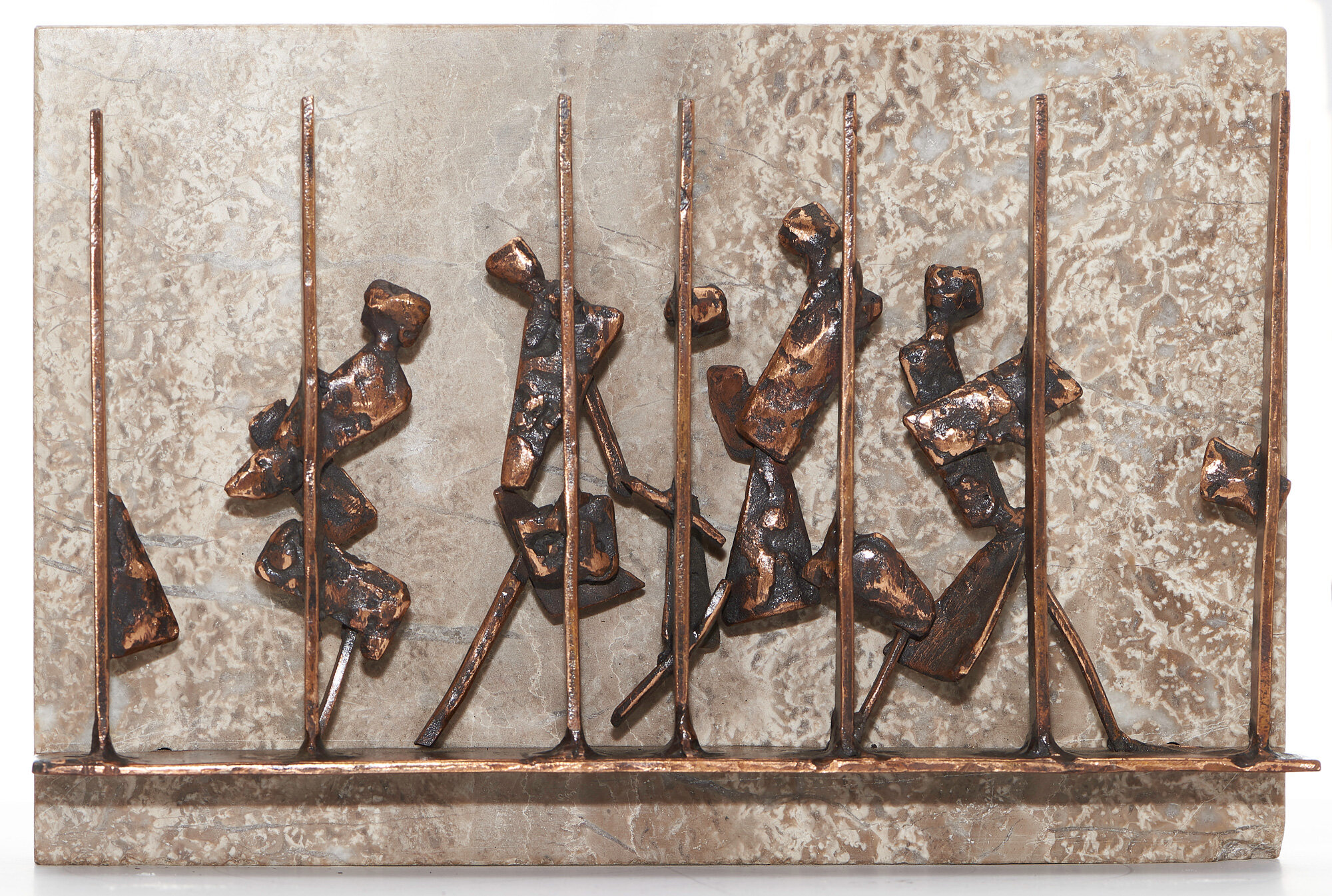
Corridor I
Welded bronze, mounted on marble, 1977
After a visit to Derby’s Eagle Shopping Centre during the mid-1970s, Pope was inspired to develop a series of sculptures based on the theme of crowds and passing figures. He made numerous drawings both on the spot and later from memory. The fluid nature of watercolour in particular was well-suited to capturing and exploring the colour, lines, and movement of the crowd. These experimental drawings had a direct influence on his finished sculptures for the series. In this sculpture, individual figures are reduced to flat planes and surfaces interspersed with strong rhythmical lines.
Purchased from Ronald Pope in 1977
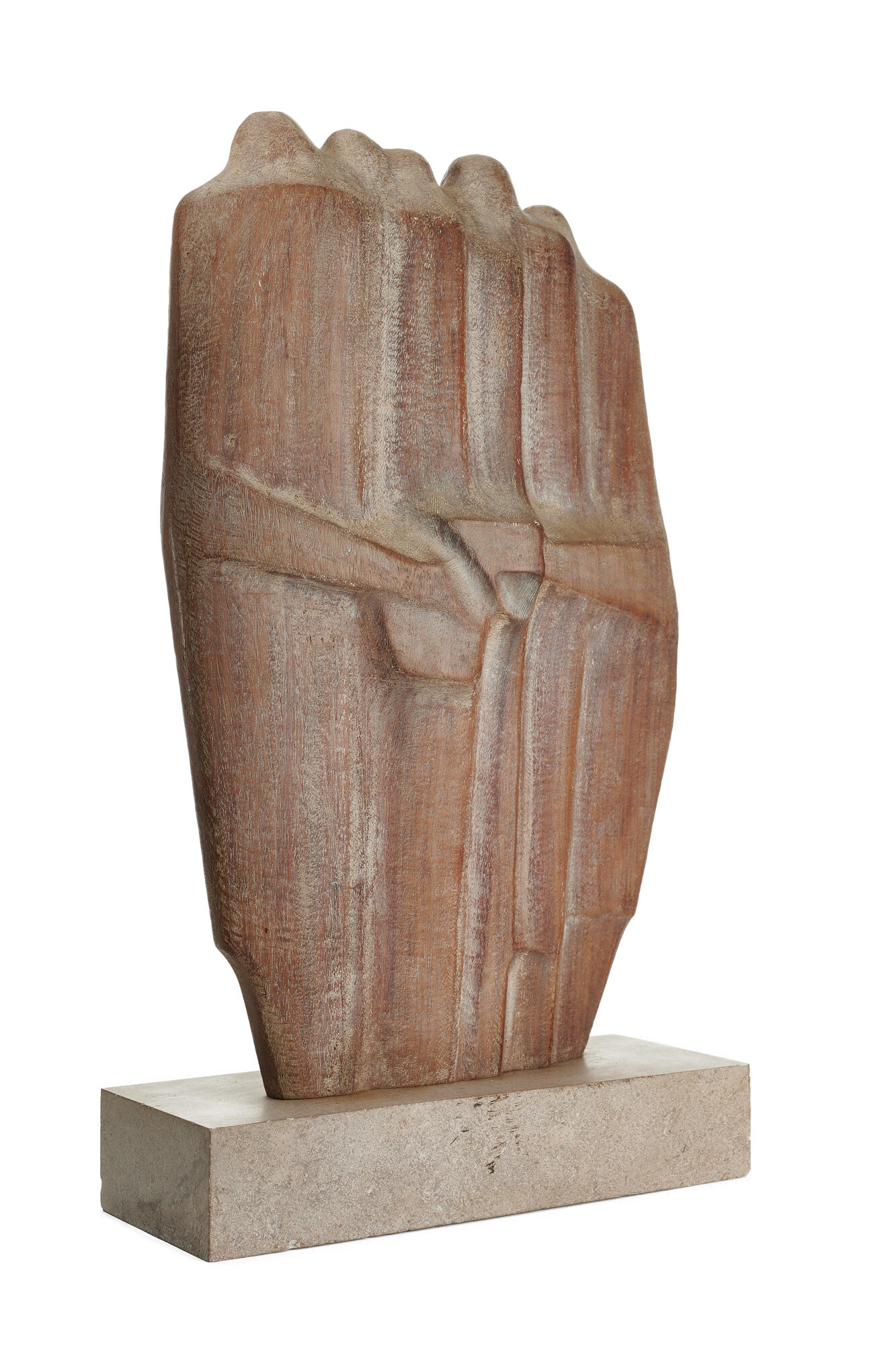
Unity
Carved and limed oak, mounted on a stone base, 1970s
Unity is among the many sculptures that developed as a result of Pope’s interest in crowds and gatherings of people. The sculpture was carved to form the appearance of a tight huddle of figures, with horizontal bands that suggest embracing arms and hands clasped together.
Presented by Mrs. J. Pope
